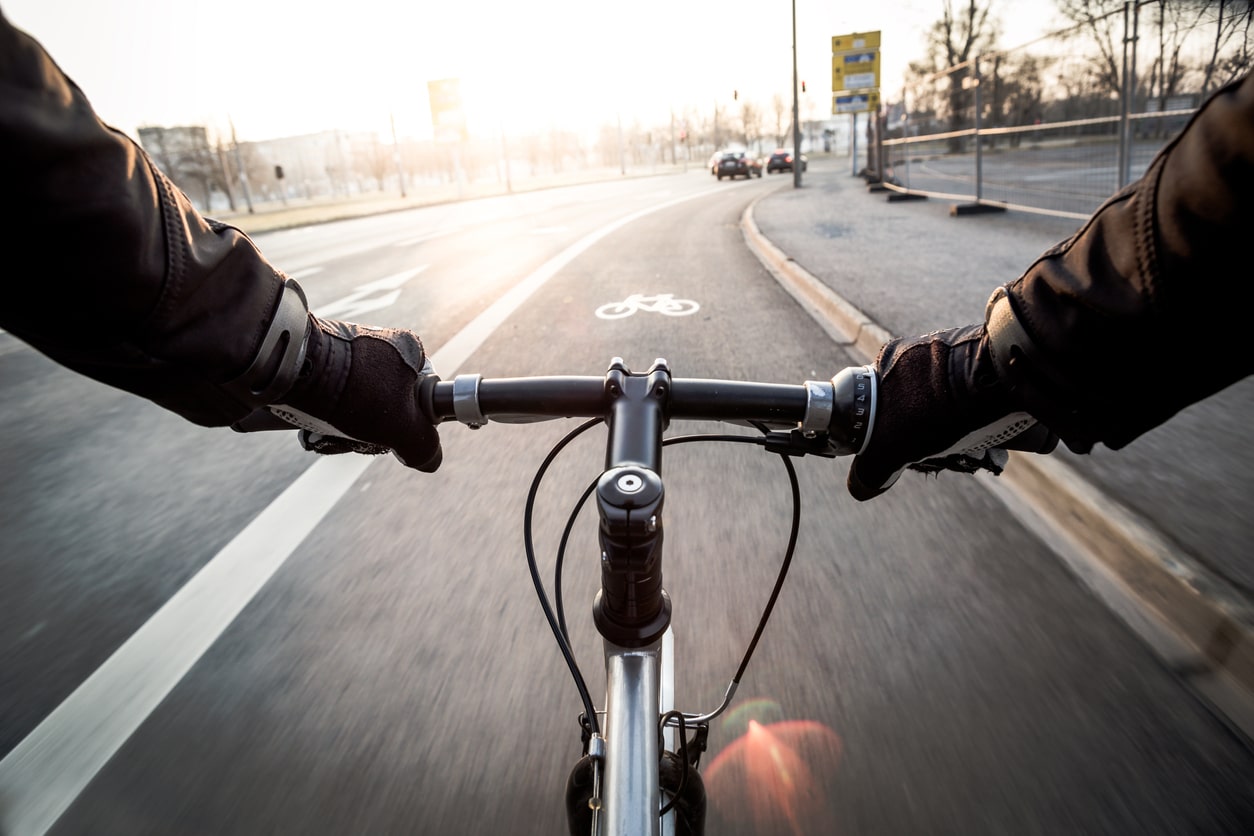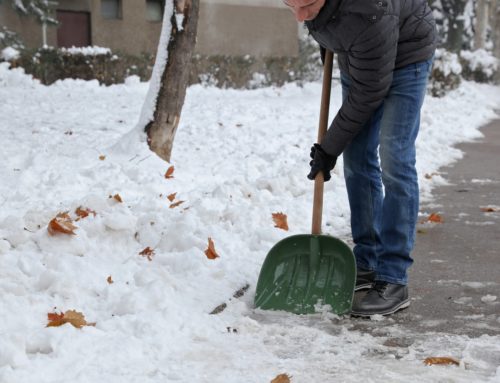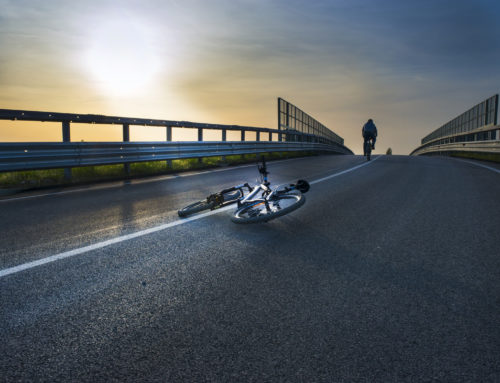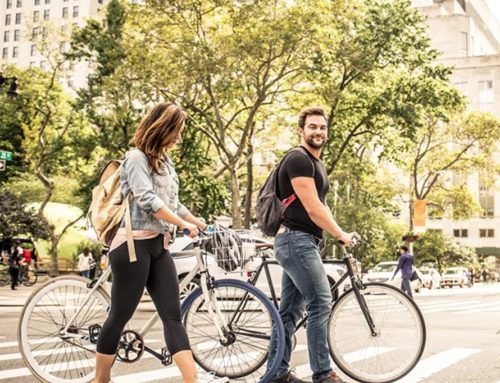Biking and Queens go together. With crowded roads and increased consciousness about climate change, many commuters have turned to bikes as their primary form of transportation.
Surprisingly, this explosion in biking has accompanied gradual improvements in bicycle safety. Bicycle accidents in New York City have dropped consistently since 2015 even as the number of bike trips has grown. As a result, the injury and fatality rate for bicyclists has reached its lowest level since New York City began tracking it.
Here is an overview of Queens bicycle safety, infrastructure, and crash statistics.
Queens Bicycle Crash Statistics
New York provides a wealth of data about car accidents, pedestrian accidents, and bicycle accidents. In 2020, Queens saw 1,238 total accidents involving bikes, e-bikes, and e-scooters. The accidents break down into 115 e-scooter accidents, 128 e-bike accidents, and 995 bicycle accidents.
These accidents include eight accidents where bikes hit other bikes. Buses hit a bike in 11 accidents. There were 24 accidents where a taxi hit a bicyclist. Three accidents involved at least two bikes and a car.
Queens bike and scooter accidents caused 1,067 total injuries. Of these, 80 injuries were related to e-scooter accidents and 987 injuries were related to e-bike and bicycle accidents. This means that 87.9% of bicycle accidents reported to the NYPD resulted in an injured bicyclist.
Accidents in Queens only killed one cyclist in 2020. This was not an unusual year. In 2021, only two bicyclists were killed in Queens traffic accidents. The 2020 bike fatality happened when a bus disregarded a traffic signal and hit a bicyclist.
Causes of Bicycle Crashes in Queens
Out of the 1,238 accidents in Queens that involved bikes, e-bikes, or e-scooters, NYPD placed the blame solely on the vehicle driver in 116 accidents. In 302 accidents, the bicyclist bore sole blame for the accident. The bicyclist and the vehicle driver shared blame for the remaining 820 accidents.
The most common cause of bicycle accidents in Queens was driver inattention or distraction. Other common causes included:
- Failure to yield the right-of-way
- Disregard a traffic signal
- Passing too closely
This has been a consistent pattern. Since 2010, Queens bicycle accidents have killed 27 cyclists. Half of those cyclists died in accidents resulting from distracted driving, failing to yield, or disregarding a traffic signal.
Bicycle-Pedestrian Crashes in Queens
NYPD was called to 21 crashes where bicycles hit pedestrians. These accidents caused no fatalities. All of these crashes resulted in a pedestrian injury, and one injured a bicyclist.
You should bear in mind that there were probably many more than 21 crashes between pedestrians and bicyclists. These 21 accidents only include those where NYPD was called for assistance. In the remaining accidents, the bicyclist and pedestrian worked something out without calling the police, or the bicyclist left the scene.
Initiatives to Improve Bicycle Safety in Queens
New York has adopted a Vision Zero plan. This plan makes traffic death reductions a priority for all city departments.
Different departments can determine how to use their resources to improve road safety, but some examples include:
- Training city employees to drive more safely while on the job
- Designing roads for safety
- Encouraging city workers to use alternate transportation to reduce traffic congestion
- Adopting regulations and ordinances to improve safety
- Tightening enforcement of traffic laws
- Expanding infrastructure to support vulnerable road users
One of the most important and widest-reaching changes under Vision Zero was an adoption of a 25 mile per hour speed limit on all city streets. Lower speed limits and better enforcement using traffic cameras protect pedestrians and bicyclists.
At 25 miles per hour, motorists have a greater margin for error and a shorter stopping distance when they counter vulnerable road users.
Bicycle Infrastructure in Queens
Another important part of New York’s Vision Zero plan is the city’s allocation of resources to bicycle and pedestrian infrastructure. New York City has added over 100 miles of bikeways since 2014. These bikeways include:
Class I Bikeways
These bike lanes run parallel to roadways, but include a barrier to physically separate motor traffic from bicycle traffic. Examples in Queens include the Brooklyn-Queens Greenway and the greenways along Jamaica Bay, Little Neck Bay, and Flushing Bay.
Class II Bikeways
Most of the bikeways in Queens are class II bikeways. These bike lanes are on the roadway. Painted lane lines and signs identify class II bikeways but they lack a physical barrier. As a result, cars can enter or cross the bikeway when turning right or pulling to the curb to park.
Since class II bikeways run between the travel lanes and parking strip, bikers risk getting hit by moving vehicles or car doors.
Class III Bikeways
Also called shared lanes or sharrows in New York, these are roadways that prioritize bicycle traffic, but both bicycles and motor vehicles can use. Traffic engineers use a variety of techniques to discourage vehicle traffic such as narrow streets and slow speed limits.
Queens has class III bikeways around Queens Borough Hall and Kissena Park. 47th Avenue and 69th Street also have long stretches with class III bikeways.
Bike Sharing Programs in Queens
The most successful bike-share program in New York City is Citi Bike. This program allows you to access shared bikes in Queens, Manhattan, The Bronx, and Brooklyn with a monthly membership.
The success of Citi Bike has allowed the program to expand. By 2023, the bike-share program will expand in Queens to Elmhurst, Jackson Heights, Sunnyside, Maspeth, and Corona.
The Future of Biking in Queens
Biking is a fixture in Queens. The number of bicyclists has grown dramatically over the past few years and will continue to grow as the city provides additional infrastructure.
The most impressive accomplishment has been the improved crash numbers despite the growth in bicycling. The number of bicyclists killed or injured in bicycle accidents has dropped by about 25% even as the number of bicycle trips has nearly quadrupled. This trend bodes well for the future of bicycle safety in Queens.
See our benchmarking report or contact us for more information.






Leave A Comment